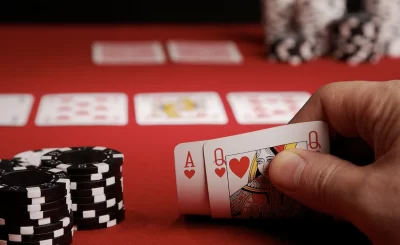Bluffing is a complex and multifaceted aspect of poker, requiring mastery of strategy, psychology, and timing. It is an essential element of the game that should be incorporated into your overall play.
Before attempting to bluff, you should assess your opponents. Look at their betting patterns and stack sizes. Also, note how they have played in the hand.
Detection strategies
One of the keys to successful bluffing is observing your opponents. It is important to decipher their betting patterns and behavior, especially in online poker games where physical tells are absent. Observe how they bet and raise, as this can indicate their strength or weakness. In addition, pay attention to their body language, as they may signal their nervousness.
It is also crucial to choose the right moment to bluff. Bluffing too often can make you predictable and easy to read. It is better to bluff occasionally and with a good reason, such as an opponent showing signs of weakness or the flop having a low pair. The position of the remaining players in the hand is also a factor to consider when choosing a bluffing strategy. Typically, late position has a greater advantage over early position when bluffing.
Bluffing in pot-limit tournaments
Bluffing is a subtle art that requires careful planning and an understanding of the game’s dynamics. It is not enough to simply bet with a weak hand when you feel like it. The best bluffs are combined with hands that have the potential to improve as the hand develops. These are known as semi-bluffs and they can be more profitable than pure bluffs.
It is also important to consider the opponent’s recent history and table image when deciding whether to bluff. For example, if an opponent has just folded to a large pot, they are probably thinking more about protecting their stack and make good targets for bluffs.
A skilled poker player will be able to decode their opponents’ physical tells and adjust the frequency of their bluffs accordingly. This is a key skill that separates amateurs from professionals. Professional players train meticulously to control their body language and maintain a “poker face.” They may even use biofeedback technology to manage involuntary responses such as heart rate and skin conductivity.
Bluffing in limit tournaments
Bluffing is a crucial part of winning poker. It requires careful observation, strategic thinking, and a keen understanding of your opponents’ tells. Moreover, it’s important to know when to use bluffing and how often to do it. Bluffing too much can make you easy to read and decrease your bluff’s effectiveness.
It is also advisable to choose your bluffing bet sizes carefully. You should match your bluffing bet size to the bet size you would place on your value hands in the same situation. Otherwise, competent players will notice the difference and be able to exploit your bluffs.
Once you’ve caught someone in a bluff, they’ll either change their strategy or tighten up, depending on how badly they lost. This is good news for you, as it means that they’ll be less likely to call your bluffs in the future. This will enable you to increase your winnings. However, it is also important to avoid overbluffing, as this can backfire and cost you money in the long run.
Bluffing in no-limit tournaments
Bluffing is an essential part of any poker player’s game, but mastering this skill takes practice. Even the best players will experience failed bluffs from time to time, but they learn from their mistakes and continue improving their game. Learning to recognize subtle cues from opponents and using smart bet sizing will help you increase your winning potential.
Choosing the right moment to bluff is crucial, as is establishing a consistent table image and projecting confidence with your betting patterns. It is also important to be aware of the texture of the board and how your opponent plays it, as this will affect their reaction to your bluff.
Pure bluffs – when you bet with a hand that has no chance of improving on later streets – are less effective than semi-bluffs, where you bet with a weaker hand but with the hope of improving to a stronger one in future streets. This type of bluff is more likely to succeed because it gives your opponent back-up value and makes them feel that you’re holding a strong hand.








